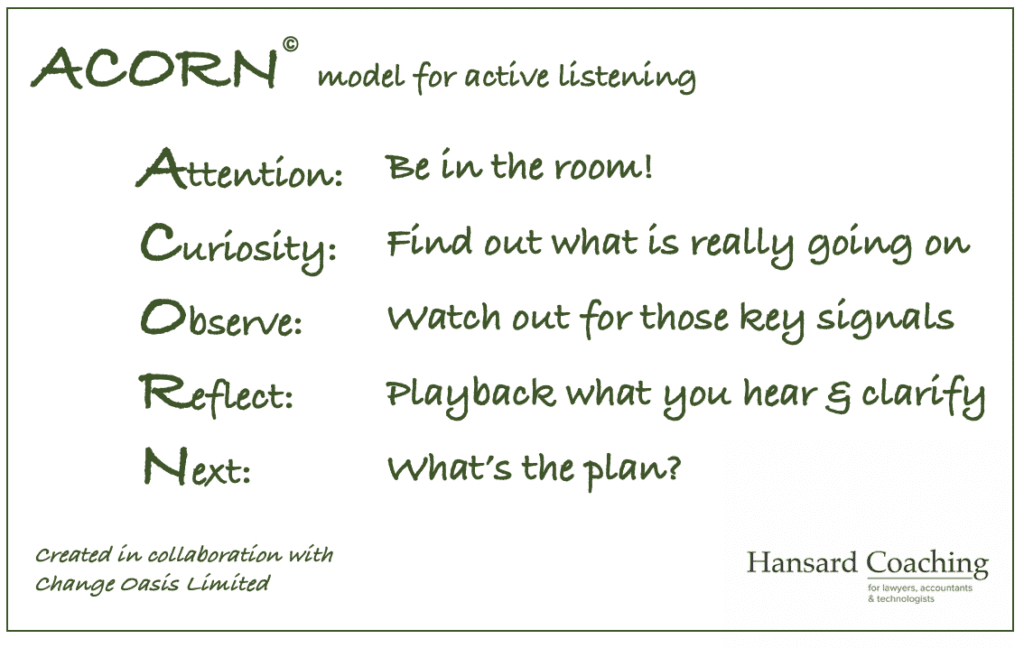Active listening drives better business results

One of the most underrated activities in the workplace has to be listening. We are all so busy doing and wanting to be heard that in the art of listening has almost faded into disuse.
Asking that all important question, “how are you?” is golden for any recipient, be that at home or in the office. But how good are we at asking that second, follow-up question, and then that third or even fourth question? How good are we at really understanding what is on a colleague’s mind, and helping them think through or even solve the challenges in front of them?
So, asking good questions and listening to the answers is a critical skill for everyone, including every leader. The more we are able to listen and support, often with silence, and then lightly probe, the more we are able to help others and to make them feel valued.
Here’s a really straightforward listening model I’ve seen give great results. Some of the elements do require practice, however the rewards are really worth it, both for you and those you really listen to.

Start by giving your full and undivided attention; listen “actively” by being fully focused on the person you’re listening to, free from other thoughts and distractions, without imposing your perspective or any judgement.
Be genuinely curious about what the other person is really saying, thinking and feeling. Be prepared to explore what is holding them back, what they have already tried and what else they might consider. Try to avoid imposing yourself on the conversation and their flow whilst maintaining a high degree of curiosity.
Observe closely, and notice all the signals, becoming aware of more than just what the person is saying; come to understand their body language and emotions, which often give colour to the meaning of what is being said.
Take a risk and reflect back what you are hearing, seeing, thinking and feeling to check your understanding of what the other person is experiencing. By being a mirror to their thoughts, you may well enable them to see their challenge from a different perspective and enable them to find their own solutions. Use phrases like, “so what I’m hearing is …”.
Finally, and, really importantly, support the other person to identify what action they can take next, and, where appropriate, reinforce with an action of your own. Using great listening to transform quality thinking into practical actions can be a transformative route to great results.
